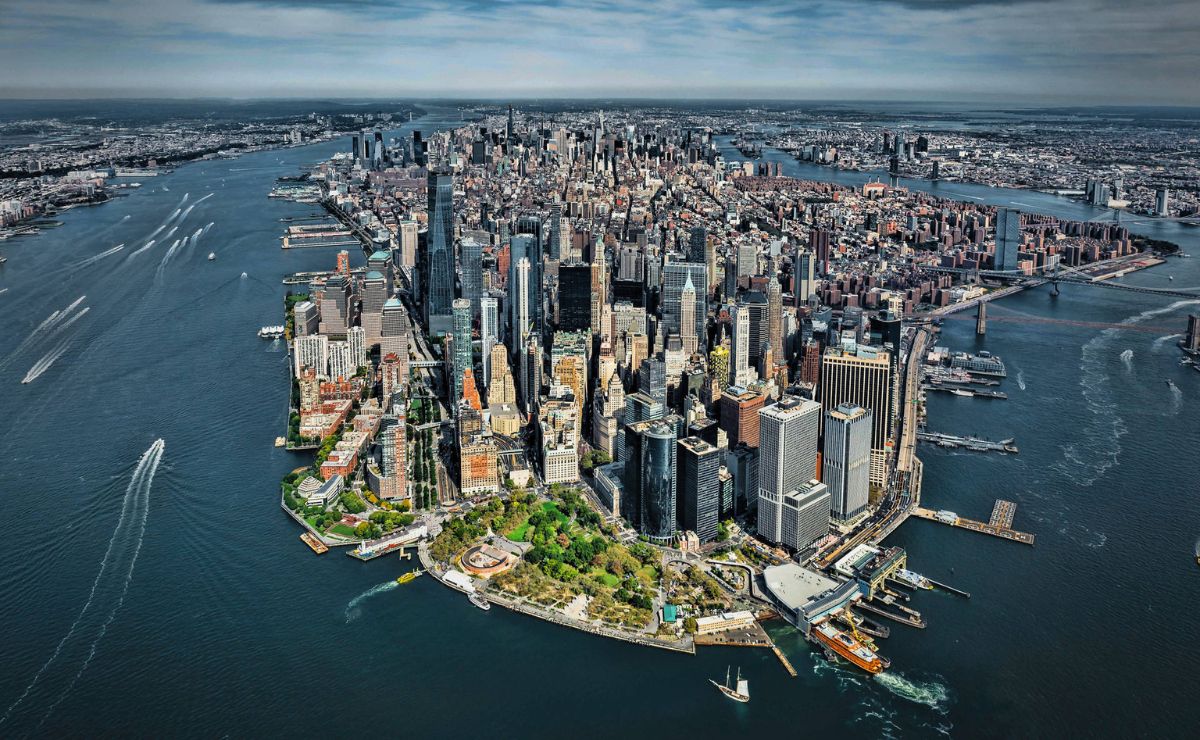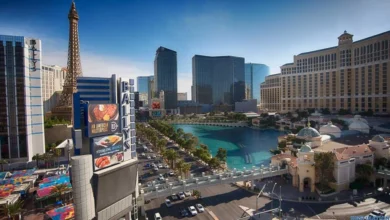The History and Cultural Significance of New York City

New York City, often referred to as the “Big Apple,” is a city that holds immense historical and cultural importance. It is a place where diverse cultures converge, and history can be felt on every street corner. Understanding the rich history and cultural significance of New York City is vital in appreciating its unique character and enduring legacy.
Early History and Settlement
The roots of New York City extend back long before the arrival of European settlers. Native American tribes such as the Lenape and Mohawk inhabited the region for centuries, establishing trade routes and developing complex societies. These Native American tribes created a cultural foundation that would later intersect with European exploration.
In the early 17th century, European exploration brought the Dutch to this land. Led by Henry Hudson, who sailed for the Dutch East India Company, European explorers arrived in the region in 1609. This marked the beginning of a new chapter in New York City’s history.
In 1626, the Dutch established New Amsterdam on Manhattan Island. The settlement served as a trading post and grew rapidly. The Dutch cultivated close relationships with Native American tribes, engaging in fur trade and other economic activities. However, Dutch control over New Amsterdam was short-lived.
In 1664, the English seized the settlement from the Dutch, renaming it New York City. The British colonial period brought forth a significant shift in power, leading to economic growth, development, and cultural assimilation.
Immigrant Experience
The 19th and early 20th centuries witnessed waves of immigration that would forever shape the cultural landscape of New York City. Thousands of immigrants sought refuge and new opportunities, drawn by the city’s promise of freedom and prosperity. They arrived from all corners of the world, including Europe, Asia, Latin America, and beyond.
Ellis Island, located in New York Harbor, became the gateway to America for millions of immigrants. From 1892 to 1954, Ellis Island served as the primary immigration processing centre. It welcomed immigrants with open arms, but also subjected them to rigorous health and legal examinations, ensuring the safety and well-being of the country.
The immigrant experience in New York City encompassed both triumph and struggle. Immigrants faced language barriers, discrimination, and the challenges of adapting to a new culture. However, they held onto their dreams and aspirations, seeking to build new lives for themselves and their families. In doing so, they formed tight-knit communities that celebrated their unique cultural heritage.
These immigrant communities made significant contributions to the cultural fabric of New York City. From the Italian enclaves of Little Italy to the Jewish neighbourhoods of the Lower East Side, each group brought their customs, traditions, cuisine, and spirit, creating a vibrant tapestry of cultures within the city.
Economic and Industrial Growth
The rise of New York City as a major port and trading hub in the late 18th and early 19th centuries marked a turning point in its history. Its prime location enabled it to thrive as a centre for commerce, attracting businesses and entrepreneurs from around the world. The city soon became the economic heart of the United States.
Industrialization further fueled the growth of New York City. Key industries such as finance, shipping, and manufacturing flourished, bolstering the city’s economic strength. Wall Street emerged as a symbol of the financial powerhouses that shaped the nation’s economy.
This economic growth also had a physical impact on the city’s skyline and infrastructure. Skyscrapers began to dominate the city’s landscape, reaching new heights and symbolising the city’s prosperity. Iconic structures such as the Empire State Building and the Chrysler Building became symbols of New York City’s grandeur.
Cultural Renaissance
New York City has experienced several cultural renaissance throughout its history. One of the most notable examples is the Harlem Renaissance of the 1920s and 1930s. Harlem became a hub for African American arts and culture, giving rise to a golden age of literature, music, theatre, and visual arts. Figures such as Langston Hughes, Duke Ellington, and Zora Neale Hurston emerged as leading voices of the movement.
Greenwich Village, particularly in the early 20th century, became a centrepiece of creativity and bohemian culture. Artists, writers, and intellectuals flocked to the neighbourhood, fostering an atmosphere of experimentalism and artistic expression. The Village became a melting pot of ideas and a haven for free thinkers.
Another significant cultural contribution of New York City is Broadway theatre. The city’s theater district has served as a platform for countless iconic productions, giving birth to the American musical and shaping the world of performing arts. Broadway shows continue to attract audiences from around the globe, cementing New York City’s reputation as a cultural capital.
Modernization and Urban Development
The post-World War II era brought about significant changes in New York City. The economic boom led to suburbanization, as families moved away from the city centre in search of a suburban lifestyle. This shift transformed the demographics and dynamics of the city.
Urban renewal projects were undertaken to revitalise certain neighbourhoods, but they also resulted in the displacement of residents and the loss of historic buildings. Some projects, like the construction of public housing, aimed to improve living conditions for the city’s residents. However, others faced criticism for destroying the fabric of communities.
Amid the push for modernization, efforts were made to preserve the city’s historic landmarks. The conservation movement gained momentum, leading to the establishment of organisations dedicated to safeguarding New York City’s architectural and cultural heritage. Buildings such as Grand Central Terminal and the Flatiron Building were saved from demolition and became revered symbols of the city’s history.
Diversity and Multiculturalism
New York City is renowned for its diversity and multiculturalism. The city is home to numerous ethnic enclaves and cultural neighbourhoods, each with its unique character and traditions. From Chinatown to Little Italy, these cultural enclaves allow residents and visitors to experience a taste of the world within a single city.
Religious diversity also thrives in New York City. Throughout the city, various faith communities coexist and contribute to the vibrant tapestry of religious life. Churches, synagogues, mosques, and temples can be found in nearly every neighbourhood, serving as places of worship and community engagement.
The city celebrates its multicultural heritage through festivals, parades, and events that honour different cultures. The Chinese New Year Parade, the Puerto Rican Day Parade, and the West Indian Day Parade are just a few examples of the vibrant celebrations that showcase the city’s rich cultural tapestry.
Contemporary Significance
New York City’s influence extends far beyond its borders. It serves as a global hub for finance, fashion, media, and the arts. Wall Street drives the world’s financial markets, while the fashion industry sets trends that reverberate worldwide. The city’s media outlets shape public opinion and impact the global discourse.
New York City’s history is riddled with challenges, including the devastating events of September 11, 2001, and the impacts of natural disasters such as Hurricane Sandy. However, the city has proven its resilience time and time again. It has emerged stronger, united, and more determined to preserve its values and sense of community.
Central to the city’s identity is its role as a melting pot of cultures and ideas. The collision of diverse perspectives, beliefs, and backgrounds gives rise to innovation, creativity, and the forging of a collective identity. New York City embodies the idea of America as a nation of immigrants, continually evolving and reinventing itself.
Conclusion
The history and cultural significance of New York City are pillars that uphold its identity. From its Native American roots and early European exploration to the waves of immigrants that shaped its diverse neighbourhoods, the city’s history is a testament to the resilience, creativity, and determination of its people. At SociallyFame, we recognize the profound impact of New York City’s history and culture, celebrating its rich heritage and contributions to the global community.
As New York City continues to evolve and face new challenges, it is essential to cherish and celebrate its rich heritage. Preserving historic landmarks and promoting cultural diversity ensures that future generations can appreciate the city’s unique tapestry of traditions, ideas, and values.
New York City’s enduring legacy stretches far beyond its borders. It has cemented its place as a cultural capital, a global influencer, and a symbol of the American dream. The city’s history reminds us of the power of unity, resilience, and the constant pursuit of progress. New York City truly stands as a testament to the extraordinary impact of history and culture on shaping our societies.
FAQs: (Frequently Asked Question)
1. How did New York City become known as the “Melting Pot” of America?
New York City’s status as a “Melting Pot” stems from its history of welcoming immigrants from around the world, who have contributed to its rich cultural tapestry through their diverse customs, languages, and traditions.
2. What role did New York City play in the Harlem Renaissance?
During the Harlem Renaissance of the 1920s, New York City’s Harlem neighbourhood became a vibrant centre for African American culture, with writers, musicians, and artists gathering to celebrate and showcase their talents, fostering a cultural renaissance that left a lasting impact on American art and literature.
3. How has immigration shaped the cultural diversity of New York City?
Immigration has been a driving force behind New York City’s cultural diversity, with successive waves of immigrants bringing their own languages, cuisines, religions, and traditions, enriching the city’s cultural landscape and contributing to its vibrant and dynamic character.




